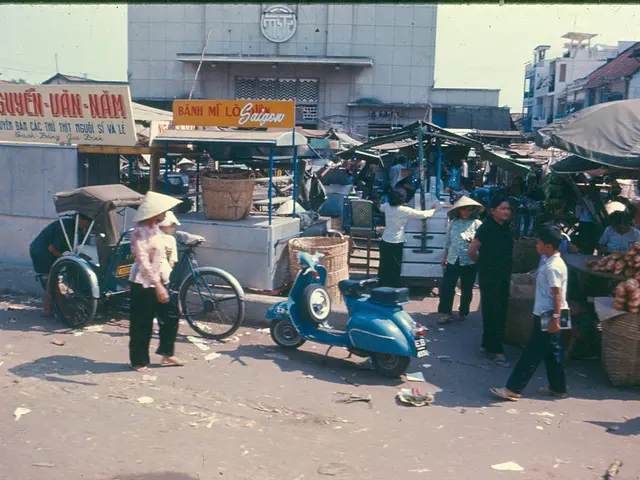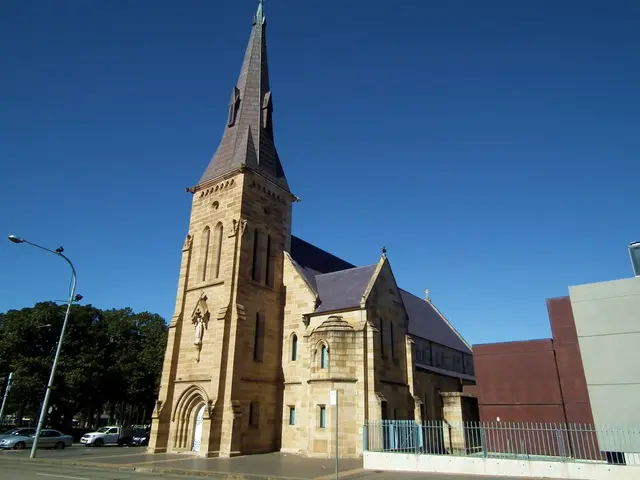Restoration of an Edo-era Artifact: Shōya House, a Piece of Japanese History, Transformed in Los Angeles
In the heart of Japan's Edo period (1603-1868), Shōya Houses stood as the epitome of local governance and community life. These residences and administrative centres were the homes of the *shōya* (or *o-shōya*), the heads of local communities responsible for managing villages or groups of villages.
The Yamada family, for example, acted as *shōya* for thirteen villages around Lake Ogura, overseeing the fishing industry and local affairs during the Edo period. Their Shōya House served not only as a family home but also as a community centre where administrative duties were carried out. Distinctive architectural features, such as nagayamon gates, marked these houses, some of which have been preserved as cultural properties today.
The role of the *shōya* reflected the societal structure of Edo Japan, where local governance was decentralized, and village heads played intermediary roles between the rural populace and the central Tokugawa shogunate authorities. The *shōya* were typically landholding families or prominent merchants entrusted with administrative duties, tax collection, conflict resolution, and economic management. Their houses embodied this status—both as symbols of local power and as practical centres for managing communal affairs.
The Shōya House architecture included a walled compound with a gatehouse, courtyard, gardens, and a Main House. The Main House was the residence and workplace of the village administrator, where taxes were collected, official records kept, and day-to-day government affairs managed.
The roles of different classes in Edo-period society were well defined. Samurai served as warriors and bureaucrats, farmers produced food and raw materials, craftsmen transformed them into useful goods, and merchants distributed them. The shogun held political power, controlling the military and governing the civilian population.
The Edo period also saw massive political, economic, and social changes across Japan, which was still largely rural. The Tokugawa Shogunate established power in 1603, ushering in a new era of peace and stability. However, farmers' lives were burdened by heavy taxation and dependent on the unpredictable forces of nature.
The bakuhan system, a combination of hierarchical structures and a highly bureaucratic framework, governed the period. The Shōya House served as a gathering place for the entire village, hosting weddings, funerals, religious ceremonies, festivals, and seasonal events.
In an age marked by interconnections between "the local" and "the global", the Shōya House is a reminder of the interdependence of regions, communities, and natural resources. Today, a Shōya House has been transported from Japan to the Huntington Library, Art Museum, and Botanical Gardens in Pasadena, California, offering a glimpse into the past and the intricate system of governance that once thrived in Edo-period Japan.
- Amidst the resurgence of interest in traditional Japanese culture and lifestyle, a Shōya House has been transplanted from its native Japan to the Huntington Library, Art Museum, and Botanical Gardens in Pasadena, California.
- The architectural design of the Shōya House, crafted during the Edo period (1603-1868), reflects the unique blend of home-and-garden aesthetics, which is prevalent in Japanese art and design.
- In the heart of seventeen villages around Lake Ogura, the Yamada family acted as shōya, managing communal activities and overseeing the local food industry during the Edo period.
- The governance structure of Edo Japan dictated that the shōya, responsible for local affairs, acted as intermediaries between the rural populace and the central Tokugawa shogunate authorities.
- With the economic progression of the Edo period, traditional crafts played a significant role in the production of useful goods, demonstrating the innovation and artistry of Japanese artisans.
- Today, the Shōya House stands as a testament to the rich tradition of community and governance, which once flourished in the rural communities of Edo-period Japan.
- In our modern world, with its focus on global events and technological innovation, it is essential to remember that strong community ties and local traditions, as represented by the Shōya House, continue to play a crucial role in shaping our societies and preserving our heritage.




